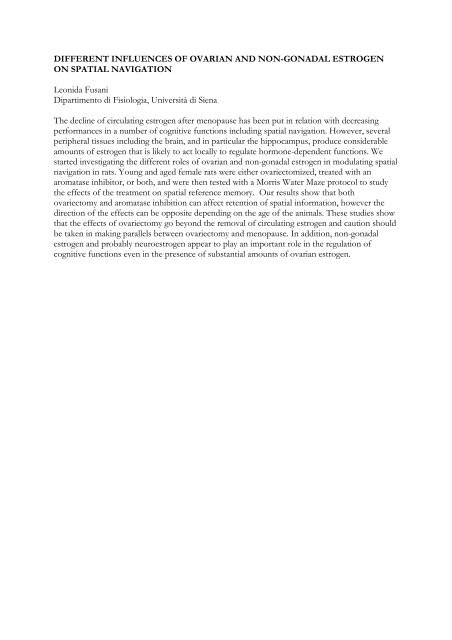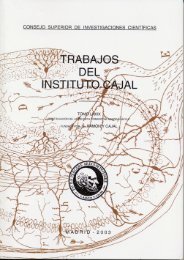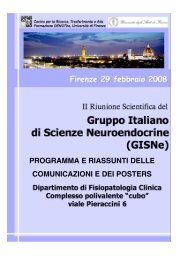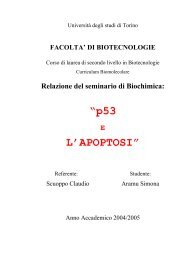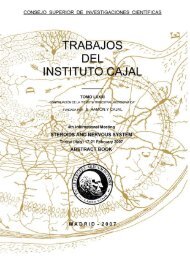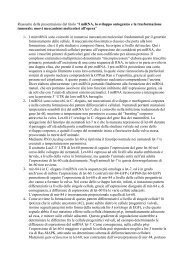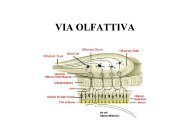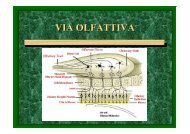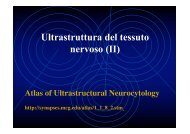GISNe - Anatomia, Farmacologia e Medicina Legale
GISNe - Anatomia, Farmacologia e Medicina Legale
GISNe - Anatomia, Farmacologia e Medicina Legale
You also want an ePaper? Increase the reach of your titles
YUMPU automatically turns print PDFs into web optimized ePapers that Google loves.
DIFFERENT INFLUENCES OF OVARIAN AND NON-GONADAL ESTROGEN<br />
ON SPATIAL NAVIGATION<br />
Leonida Fusani<br />
Dipartimento di Fisiologia, Università di Siena<br />
The decline of circulating estrogen after menopause has been put in relation with decreasing<br />
performances in a number of cognitive functions including spatial navigation. However, several<br />
peripheral tissues including the brain, and in particular the hippocampus, produce considerable<br />
amounts of estrogen that is likely to act locally to regulate hormone-dependent functions. We<br />
started investigating the different roles of ovarian and non-gonadal estrogen in modulating spatial<br />
navigation in rats. Young and aged female rats were either ovariectomized, treated with an<br />
aromatase inhibitor, or both, and were then tested with a Morris Water Maze protocol to study<br />
the effects of the treatment on spatial reference memory. Our results show that both<br />
ovariectomy and aromatase inhibition can affect retention of spatial information, however the<br />
direction of the effects can be opposite depending on the age of the animals. These studies show<br />
that the effects of ovariectomy go beyond the removal of circulating estrogen and caution should<br />
be taken in making parallels between ovariectomy and menopause. In addition, non-gonadal<br />
estrogen and probably neuroestrogen appear to play an important role in the regulation of<br />
cognitive functions even in the presence of substantial amounts of ovarian estrogen.


